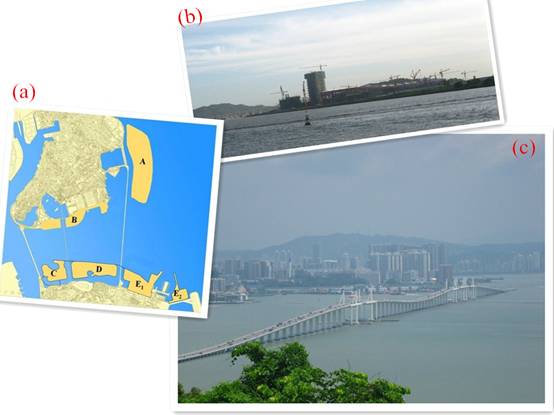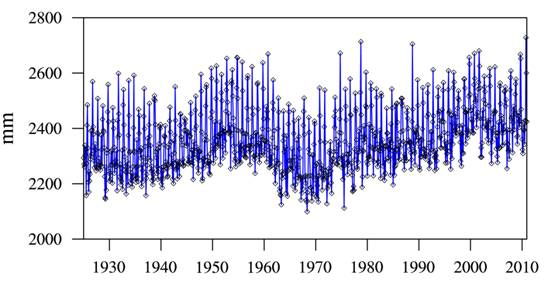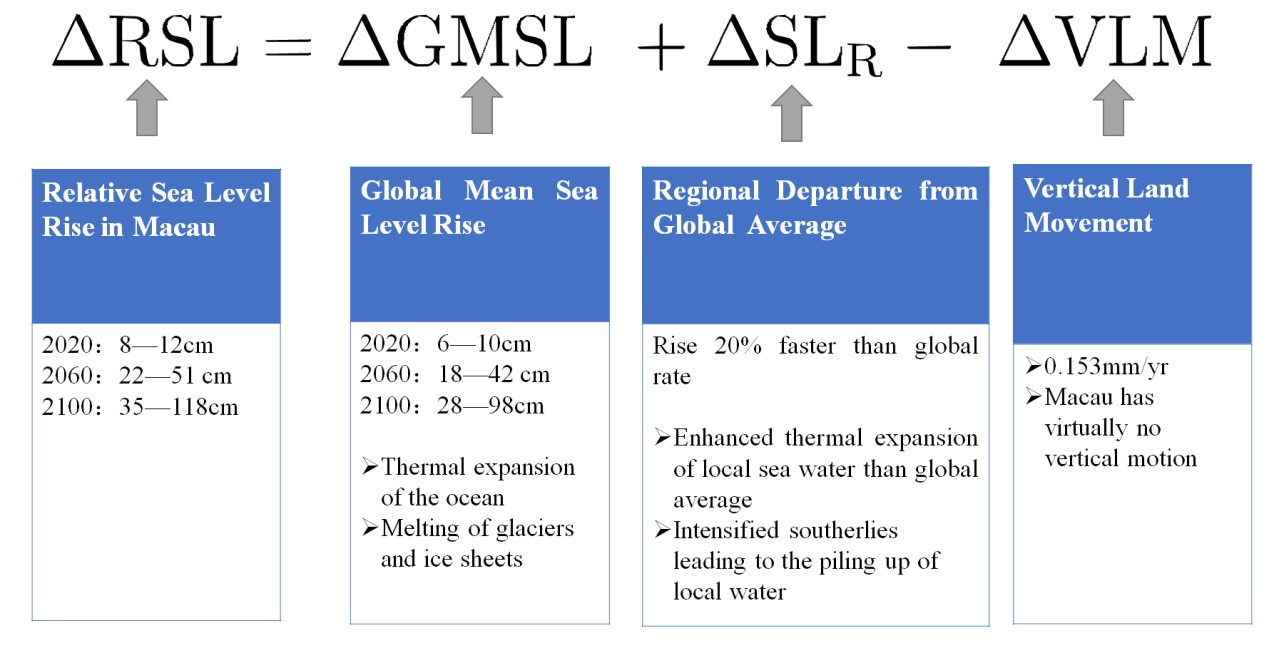Historical Change and Future Scenarios of Sea Level Rise in Macau and Southern China Coast
Date:2015-09-15
Under the background of global warming, sea level rise (SLR) poses increasingly threats to coastal lowlands of China, especially for Macau. Macau is most susceptible to SLR-induced hazards, because of its limited land areas and ongoing land reclamation programs (Figure 1). Macau’s government is most concerned about the potential sea level rise in future brought by climate change and mitigation strategies to deal with associated detrimental consequences.

Figure 1 (a) Macau's plan for land reclamation announced in December 2009 (Image from Gabinete para o Desenvolvimento de Infra-estruturas). (b, c) land reclamation sites in Macau (Photo Credit: WANG Lin, photo taken in August 2013)
Recently, Dr. WANG Lin, Prof. HUANG Gang and Prof. CHEN Wen from Institute of Atmospheric Physics and Associate Prof. ZHOU Wen from City University of Hong Kong have investigated historical sea level variation and develop future scenarios for Macau and adjacent waters, aiming to provide the knowledge required for accommodating and protecting against sea level rise. Sea level in Macau is rising at an accelerated rate during the past 80 years: 1.35 mm yr?1 over 1925–2010 and jumping to 4.2 mm yr?1 over 1970–2010 (Figure 2). Based on local tide gauge records, they found that sea level in Macau is rising at an accelerated rate during the past 80 years: 1.35 mm yr?1 over 1925–2010 and jumping to 4.2 mm yr?1 over 1970–2010 (Figure 2). Despite the overall upward trend, the sea level in Macau also exhibits multidecadal variability. Meanwhile, regional-scale spatially coherent signals of sea level oscillations are found over the whole southern China coast. Furthermore, satellite altimetry data reveal that the sea level near Macau rose 10% faster than the global mean during 1993 to 2012. In addition, since vertical land movement (VLM) is essential to the local effect of SLR, the rate of VLM at Macau is estimated at ?0.153 mm yr?1, accumulating only 1.53 cm of subsidence over a span of one century.

Figure 2 Temporal evolution of relative sea level at Macau (units: mm) in reference to local chart datum. (Wang et al., 2015)

Figure 3 Projected sea level rise in Macau (left side of the equal sign) and its components (right side). (Figure plotted by IAP)
They predict that in future, Macau will continue to see larger SLR—about 20% higher than the global rate, indicating a 1.2m SLR in Macau corresponding to a unit increase of global average. This is induced primarily by a greater-than-average rate of oceanic thermal expansion in Macau, together with enhanced southerly anomalies that lead to a piling up of sea water. Specifically, the sea level is projected to rise 8--12, 22--51 and 35--118 cm by 2020, 2060 and 2100, respectively, depending on the emissions scenario and climate sensitivity (Figure 3). The SLR under the lower emissions scenario is expected to be less severe than that under the higher emissions scenarios: by 2100, an SLR of 65-118 cm in Macau under RCP8.5, almost twice as fast as that under RCP2.6. Moreover, the SLR will accelerate under RCP6.0 and RCP8.5, while remaining at a moderate and steady rate under RCP4.5 and RCP2.6. The GHG forcing scenario has virtually no influence on the projected change during the beginning of this century, but its impact on divergent sea level responses becomes noticeable after the middle of the century. Still, the research team acknowledged that the majority of the projection uncertainty comes from the emissions scenario and poor knowledge of climate sensitivity.
This study is recently accepted by Advaces in Atmospheric Sciences.
Citation
Wang L., Huang G., Zhou W., Chen W., 2016: Historical Change and Future Scenarios of Sea Level Rise in Macau and Adjacent Waters. Adv. Atmos. Sci., doi: 10.1007/s00376-015-5047-1. http://159.226.119.58/aas/EN/abstract/abstract2803.shtml
Contact:
Dr. HUANG Gang, hg@mail.iap.ac.cn
